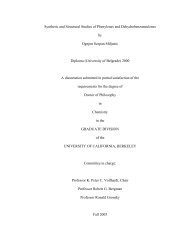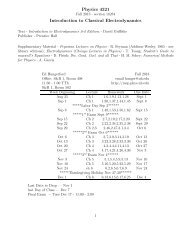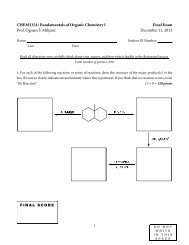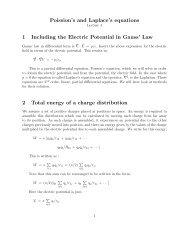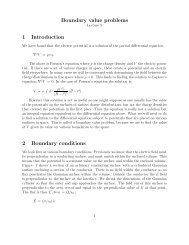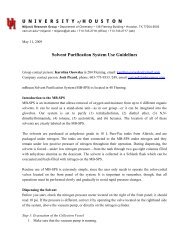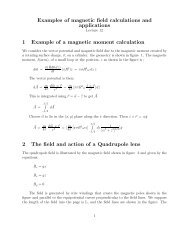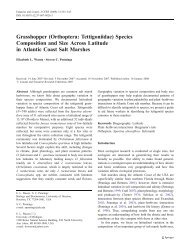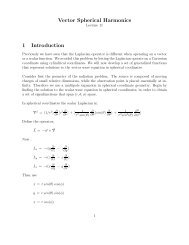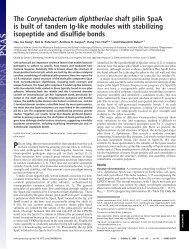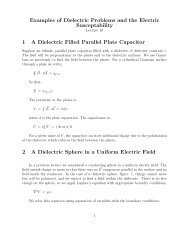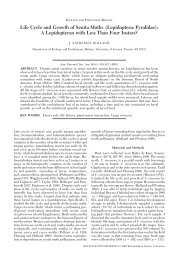Scattering 1 Classical scattering of a charged particle (Rutherford ...
Scattering 1 Classical scattering of a charged particle (Rutherford ...
Scattering 1 Classical scattering of a charged particle (Rutherford ...
You also want an ePaper? Increase the reach of your titles
YUMPU automatically turns print PDFs into web optimized ePapers that Google loves.
a spherical system, written in terms <strong>of</strong> spherical harmonics. We write;e ikz = e ikr cos(θ) = ∑ C n Y 0 nUse the orthonormal properties <strong>of</strong> the spherical harmonic to write;C n = 2π ∫ d(cos(θ)) Y 0 neikrcos(θ)Note that an integral representation <strong>of</strong> the spherical Bessel function, j l (kr), isj l (kr) = (−i) l /2π∫0d(cos(θ)) e ikr cos(θ) P n (cos(θ)We may also use the addition theorem which has the form;P l (cos(θ)) =4π2l + 1∑mYlm (θ 1 , φ 1 ) Yl ∗ m (θ 2 , φ 2 )where the angles (1) and (2) refer to the angles <strong>of</strong> vectors ⃗ k and ⃗r in the specified coordinatesystem. This gives the required form for the plane wave;e ikr cos(θ) = 4π ∑ i l j l (kr) Yl m (ˆk) Yl∗ m (ˆr)l,mThis form for the incident wave can then be matched at the <strong>scattering</strong> surface to the fieldequations inside and outside the <strong>scattering</strong> center by matching the boundary conditions atthe surface. Recall that a similar technique was used to obtain the reflection (<strong>scattering</strong>)and transmission coefficients <strong>of</strong> an EM wave incident on a dielectric and conducting surfaceplaner surfaces. For example, this technique can be used to develop Mie <strong>scattering</strong> (light<strong>scattering</strong> from small dielectric <strong>particle</strong>s).7 Thompson <strong>scattering</strong> (e.g.<strong>Classical</strong> EM <strong>scattering</strong> fromatomic electrons)The power radiated by an accelerated charge is obtained from the Poynting vector.⃗S = ⃗ E × ⃗ H = ǫc|E| 2 ˆnThe radiation field <strong>of</strong> an accelerated charge when β ≪ c is ;⃗E =4πǫ q × ˆn ×⃗˙β[ˆnR] ret9




